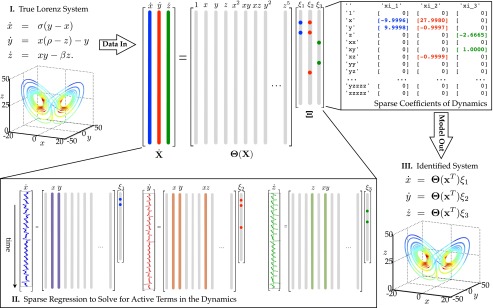Fig. 1.
Schematic of the SINDy algorithm, demonstrated on the Lorenz equations. Data are collected from the system, including a time history of the states and derivatives ; the assumption of having is relaxed later. Next, a library of nonlinear functions of the states, , is constructed. This nonlinear feature library is used to find the fewest terms needed to satisfy Ξ. The few entries in the vectors of Ξ, solved for by sparse regression, denote the relevant terms in the right-hand side of the dynamics. Parameter values are , . The trajectory on the Lorenz attractor is colored by the adaptive time step required, with red indicating a smaller time step.

